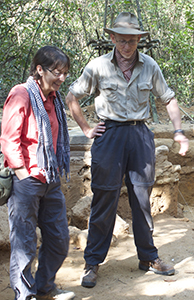
Miriam Stark, PhD
Professor
Office: Dean Hall 203C
Office Hours: click here
Phone: 956-7552
Email: miriams@hawaii.edu
Background
General Interests
Current Research
Selected Publications
Courses Taught
Service to Our Communities
Background
I joined the University of Hawai’i-Manoa in August 1995 as a Southeast Asian archaeologist. My B.A. (1984) is from the University of Michigan, and I completed my M.A. (1987) and PhD (1993) degrees from the University of Arizona. My archaeological and ethnographic field experience involves field-based research in several locations of North America (first the Midwest, the sub-Arctic, and the American Southwest), the Near East (Israel and Turkey), and in Southeast Asia (Philippines, Thailand, Cambodia). In 1996 I began co-directing the [Lower Mekong Archaeological Project (LOMAP) in southern Cambodia, and have continued work in this region over the last 12 years. I edited the journal Asian Perspectives, the leading archaeological journal devoted to the prehistory of Asia and the Pacific region, published by the University of Hawai'i Press, from 2000-2006. Since 2007, with funding from the Henry Luce Foundation Initiative in East and Southeast Asian Archaeology and Early History, I have directed the Luce Asian Archaeology Program.
General Interests
My current research concentrates in Southeast Asian archaeology, and my archaeological research focus on aspects of political economy and state formation (including economic intensification, regional networks, and landscape approaches). My previous ethnoarchaeological background in the Philippines has stimulated a deep interest in the anthropology of technology, and my ceramic research in the American Southwest and in the Philippines reflects this focus.
Current Research
 My current research concentrates in Cambodian archaeology, although I am familiar with and advise students on research throughout mainland and island Southeast Asia. My Cambodian research, undertaken through the Lower Mekong Archaeological Project (hereafter LOMAP) and the Greater Angkor Project, involve collaborative archaeological research to study state formation and collapse through field-based archaeological and geoarchaeological investigations. Beginning in the last centuries BCE, the lower Mekong region that we associate with Angkor hosted a sequence of ancient states whose rise, collapse and regeneration form the basis of my research.
My current research concentrates in Cambodian archaeology, although I am familiar with and advise students on research throughout mainland and island Southeast Asia. My Cambodian research, undertaken through the Lower Mekong Archaeological Project (hereafter LOMAP) and the Greater Angkor Project, involve collaborative archaeological research to study state formation and collapse through field-based archaeological and geoarchaeological investigations. Beginning in the last centuries BCE, the lower Mekong region that we associate with Angkor hosted a sequence of ancient states whose rise, collapse and regeneration form the basis of my research.
See also this time-series map, courtesy of the Electronic Cultural Atlas Initiative and the University of Sydney, provides some sense of the region’s dynamism.
My Philippines research, begun in 1987 in connection with my doctorate, was a longitudinal ethnoarchaeological study in Kalinga Province (northern Luzon) that examines the relationship between ceramic production and distributional networks among small-scale societies. Substantial technological change has taken place in the Pasil municipality since the beginning of the Kalinga Ethnoarchaeological Project in 1973 by Dr. William Longacre (University of Arizona). I documented some of these changes during 1987-1988 in the Pasil village of Dalupa as part of my doctoral research. Still more changes in agricultural and domestic technology have occurred in the Kalinga villages where we work since that time: field visits in 1997 and 1999 have investigated the nature and directionality of these shifts. Despite such profound change, pottery-making and pottery use continue to play important roles in the lives of Kalinga villagers in Dalupa and are the source of continuing study for the Kalinga project.
Cambodian Research
I began working in Cambodian archaeology in 1996, when I began co-directing the Lower Mekong Archaeological Project (or LOMAP) in collaboration with Cambodia’s Ministry of Culture and Fine Arts. Work through LOMAP concentrates in the Mekong Delta of southern Cambodia, and seeks to understand the origins of state formation in the lower Mekong region. Between 1996 and 2009, I co-directed nine archaeological field seasons in and around the site of Angkor Borei. Our work blended research with student training. (Click for a podcast that describes “Training Archaeologists in Cambodia” with ThinkTech Hawaii, November 2013) While the primary training emphasis lays in capacity-building for Khmers, more than 50 students from Cambodia, Southeast Asia, and other countries participated on the project as interns, field school students, and volunteers. See these photos from the 2003 Field Session. LOMAP work is also interdisciplinary, and brought together specialists in geoarchaeology, environmental studies, and geochronometry to answer research questions centered on understanding why the Mekong delta was a crucible of early state formation. This region was important from the earliest recorded Chinese accounts of Southeast Asia, and associated with a kingdom that the Chinese called Funan. Research was supported by grants from multiple agencies, including the National Science Foundation, the National Endowment for the Humanities, the National Geographic Society, the Wenner-Gren Foundation for Anthropological Research, and the Center for Khmer Studies.
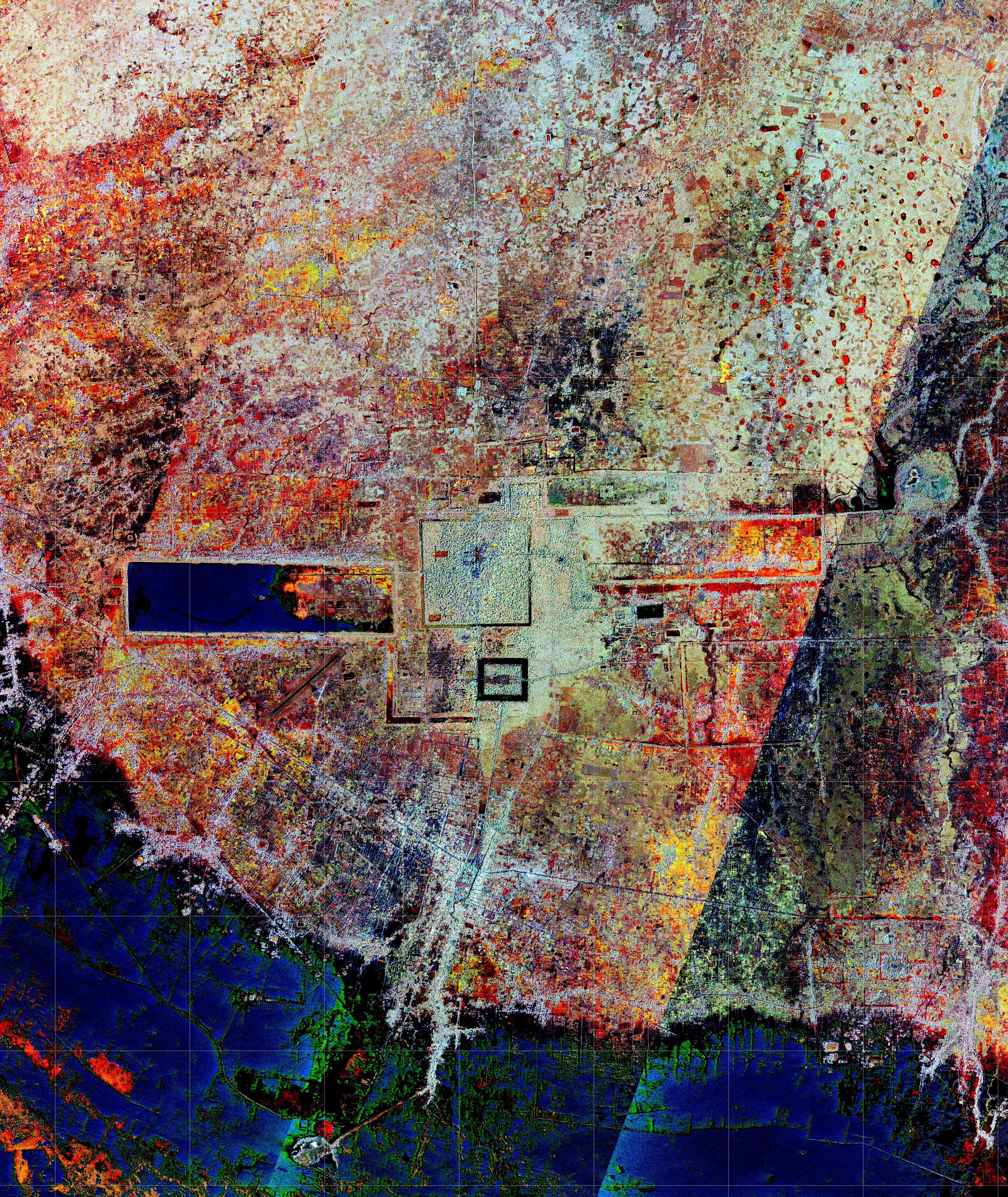 In 2010 I joined forces with the University of Sydney’s Greater Angkor Project to pursue Phase III of their long-term research program. Under the principal investigation of Dr. Roland Fletcher and Dr. Jeffrey Riegel (University of Sydney), this third and final phase investigates the “demise of Angkor” by studying Angkorian and post-Angkorian period occupational patterning in the Greater Angkor region. More than a century of archaeological, architectural, and art historical research has taken place in and around the Angkor Wat temple and its famous neighbors like the Bayon and Ta Prohm. This literary
In 2010 I joined forces with the University of Sydney’s Greater Angkor Project to pursue Phase III of their long-term research program. Under the principal investigation of Dr. Roland Fletcher and Dr. Jeffrey Riegel (University of Sydney), this third and final phase investigates the “demise of Angkor” by studying Angkorian and post-Angkorian period occupational patterning in the Greater Angkor region. More than a century of archaeological, architectural, and art historical research has taken place in and around the Angkor Wat temple and its famous neighbors like the Bayon and Ta Prohm. This literary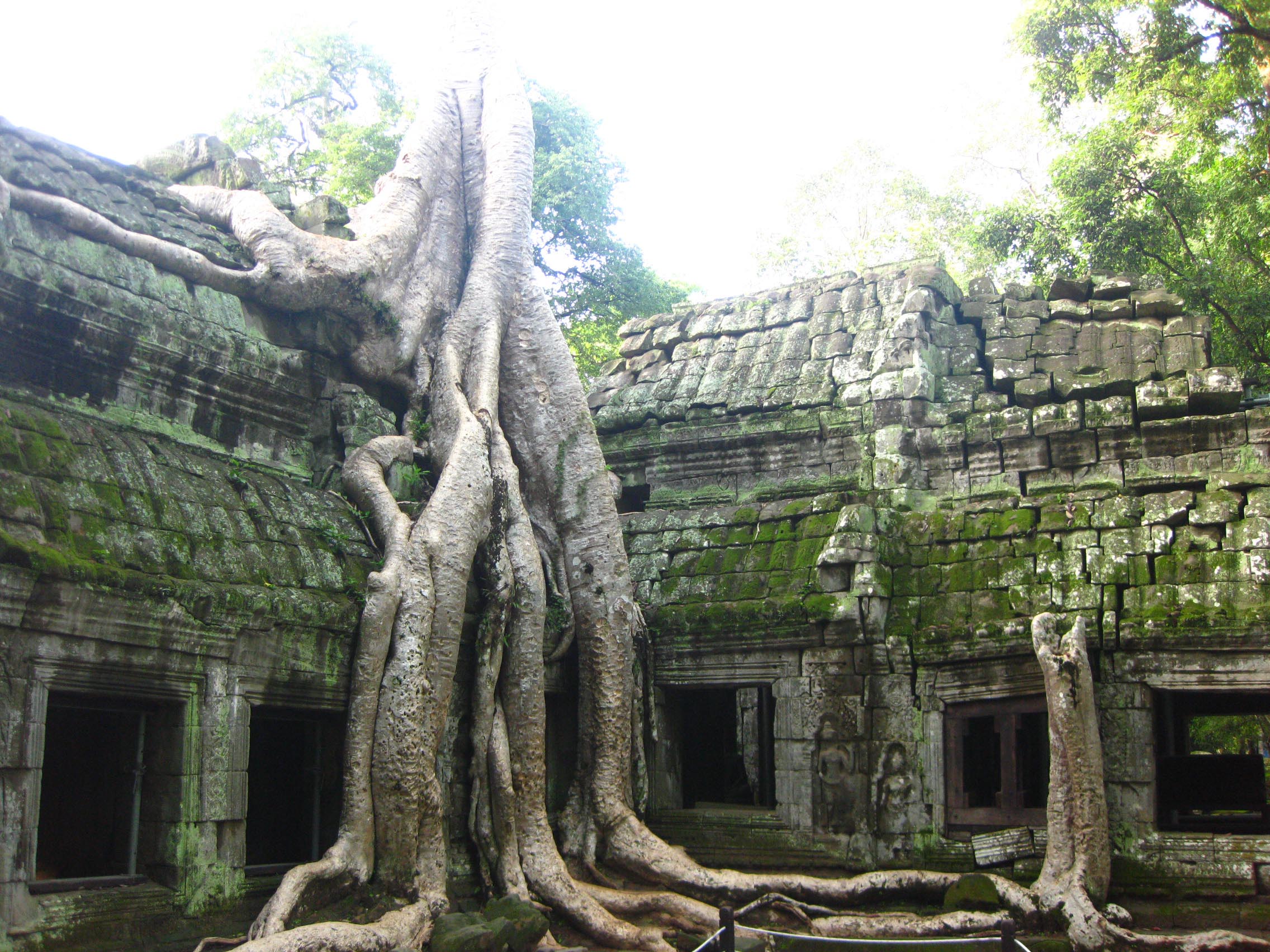 corpus is vast and represents the best-documented ancient civilization in Southeast Asia. But archaeological research has, until recently, taken a secondary role to architectural conservation and historic preservation. The Greater Angkor Project is one of several current international projects whose primary goal is to understand the organization and processes by which the Angkorian state grew, fluoresced, and ultimately collapsed.
corpus is vast and represents the best-documented ancient civilization in Southeast Asia. But archaeological research has, until recently, taken a secondary role to architectural conservation and historic preservation. The Greater Angkor Project is one of several current international projects whose primary goal is to understand the organization and processes by which the Angkorian state grew, fluoresced, and ultimately collapsed.
My work, as GAP III Co-Investigator, concentrates on testing habitation sites throughout the Greater Angkor region. GAP work in Phases I and II focused on documenting the site distribution and infrastructural network (particularly hydraulic systems and communication routes) that undergirded the Khmer state. For historical and conservation-related reasons, very little previous archaeological work has searched for Angkorian-period residential sites (except for outstanding research by Pierre Baty, through INRAP). Our GAP III field research in 2010 and 2012 has tested several archaeological sites for evidence of Angkorian and post-Angkorian period residence (Click for a podcast that reports on the 2010 GAP III season). These include Angkor Wat, Ta Prohm, Chau Srei Vibol, Kok Phnov, Wat Athvea, and Wat Prei Einkosei. I am most fortunate to collaborate closely with APSARA Authority through Chhay Rachna and to also work with a group of talented junior archaeologists (many of whom are still graduate students). Besides myself and Chhay Rachna, GAP III project co-directors include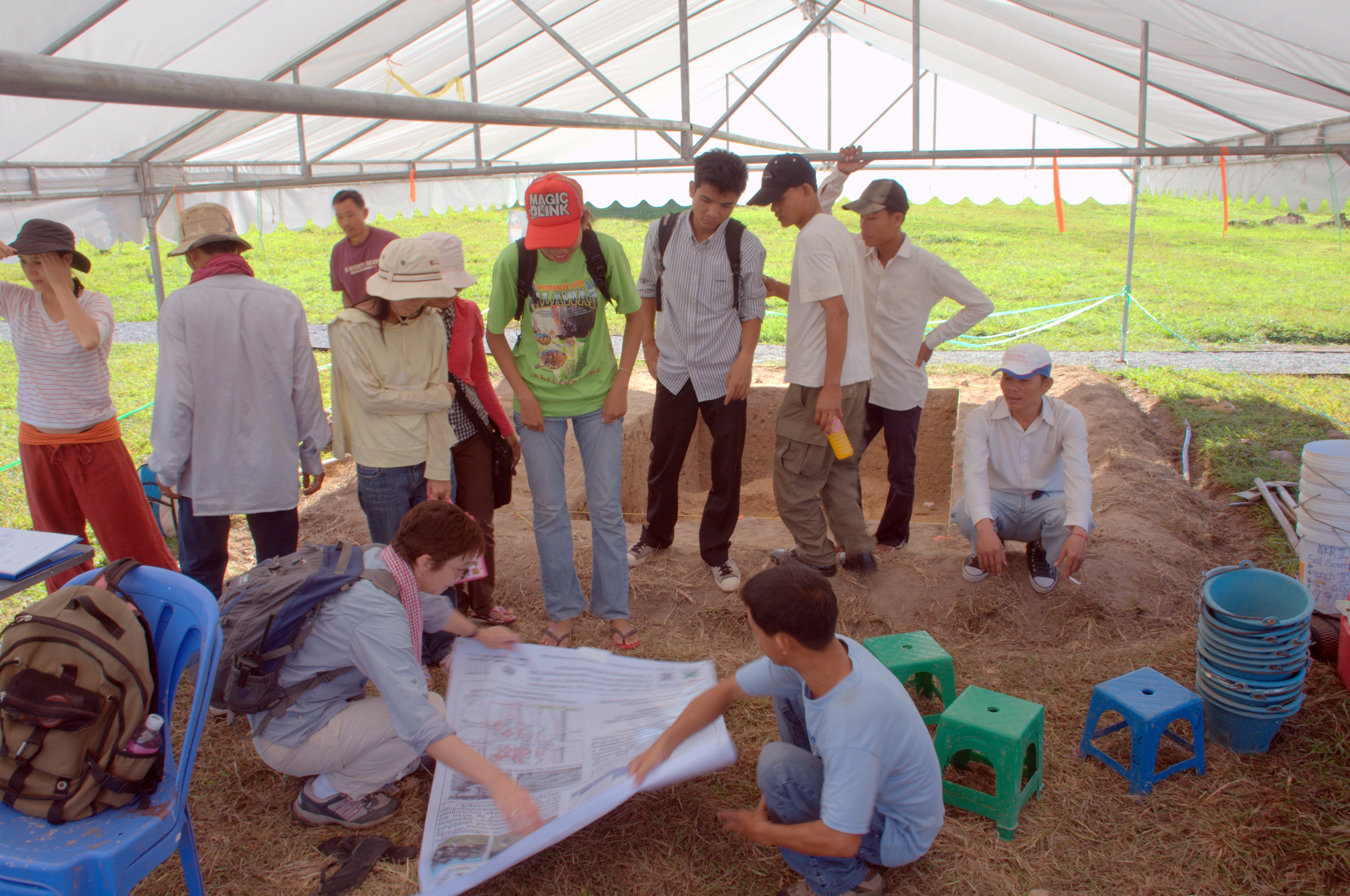 Heng Piphal and Alison Carter. Participating in GAP III research has enabled me to continue my research and training goals in Cambodia, and has included Southeast Asian graduate students and instructors from other programs including the University of the Philippines, Australian National University, Universiti Malaysia Sarawak (UNIMAS), and the National University of Laos. Our 2013 field excavations in and around Angkor Wat are also generating great interest, thanks in large part to the recent LiDAR imaging of the region (add hotlinks to all those articles). Graduate students who focus on Southeast Asia are welcome to apply to participate in the 2014 archaeological field season; click here to contact Dr. Stark).
Heng Piphal and Alison Carter. Participating in GAP III research has enabled me to continue my research and training goals in Cambodia, and has included Southeast Asian graduate students and instructors from other programs including the University of the Philippines, Australian National University, Universiti Malaysia Sarawak (UNIMAS), and the National University of Laos. Our 2013 field excavations in and around Angkor Wat are also generating great interest, thanks in large part to the recent LiDAR imaging of the region (add hotlinks to all those articles). Graduate students who focus on Southeast Asia are welcome to apply to participate in the 2014 archaeological field season; click here to contact Dr. Stark).
Lower Mekong Archaeological Project (or LOMAP)
Southern Cambodia contains a rich yet poorly understood record of early historic period occupation, between ca. 200 B.C. and A.D. 500. Chinese travelers to this region in the third and sixth centuries A.D. described walled and moated cities that housed rulers, elites, and artisans of fine goods such as precious metals, jewelry, and other crafts. Archaeological work at contemporary sites in Vietnam suggests that this area was a thriving economic center in the trade routes that linked India to China by way of mainland Southeast Asia.
In most areas of the world, the transition to history is associated with the appearance of writing. Indigenous writing system first appeared in the early seventh century A.D. in southern Cambodia. Yet foreign accounts suggest that the Mekong Delta housed some of the earliest states in mainland Southeast Asia many centuries before this time. In Cambodia, we know these polities (or states or mandalas) solely through documentary evidence. The Lower Mekong Archaeological Project is the first archaeological project to examine the establishment, growth, and decline of early historic period settlements in Cambodia's Mekong Delta. Work has concentrated in and around the archaeological site of Angkor Borei and it associated Phnom Da temples.
Research by the Lower Mekong Archaeological Project at Angkor Borei has been designed to answer the following questions:
- When was Angkor Borei first settled as an ancient community?
- How did the organization and role of ancient settlement of Angkor Borei change through time?
- How did the settlement and growth of Angkor Borei, as a regional center, affect the natural and cultural landscape of the Mekong delta?
- What evidence exists that Angkor Borei served as an ancient capital of the complex polity that Chinese emissaries described as “Funan” in the 3rd-6th centuries A.D.?
You can find more information on the Lower Mekong Archaeological Project by consulting publications at the end of this webpage; selected articles on the project are also available in the Spring 1999 issue of Asian Perspectives. You can also learn more about the project by reading the attached document which is also available as a document from the Khmer Institute.
Philippine Research
I began my ethnoarchaeological research in Dalupa and the Pasil Municipality in 1987, as a member of Bill Longacre's Kalinga Ethnoarchaeological Project, through the University of Arizona. I spent the 1987-1988 academic year (and then some!) in the Pasil Municipality, and concentrated my research in the village of Dalupa. Dalupa is a moderate-sized village by Pasil standards, with approximately seventy-eight households and approximately 400 residents. What makes Dalupa unusual for Pasil is that many of its female residents make pottery as a part-time specialization. The Dalupa potters also attracted me to the village, as they humored me throughout the many long months of my interminable interviews, inventories, photographs, and record-keeping.
What I had intended to write as a dissertation on Kalinga pottery exchange transformed into a more holistic study of pottery "economics": that is, the production, distribution, and uses of pottery across the landscape. My research collected useful information on these three domains, and I also pursued related research on household economics, technological change, and social boundaries. Many archaeologists believe that source-side research in societies like the Kalinga provides useful insights and information that can be used to model prehistoric behavior (ARTICLE). Work by many members of the Kalinga Ethnoarchaeological Project has already been used in these ways, and continues to provide new ideas for archaeologists.
Selected Publications
Most of my publications are available on academia.edu.
Courses Taught
I teach introductory courses in anthropology (four-field approach) and archaeology. I also teach courses in archaeological theory, including Archaeological Theory and Interpretation, History of Archaeological Thought, The Archaeology of Complexity, Historical Ecology and Landscape Archaeology, Technology and Culture, and Peoples and Cultures of Southeast Asia. Methods courses that I teach include Ceramic Analysis, Laboratory Methods, Research Design, and Professional Skills in Anthropology. My primary geographic specialty is Southeast Asia; I teach Southeast Asian Archaeology, Asian Archaeology, and East Asian Archaeology.
The Lower Mekong Archaeological Project emphasizes training for Khmer archaeologists, but the project also accommodates a small number of trained archaeology students from western universities (not only American universities) who wish to study Cambodia’s past at the graduate level. Opportunities for a variety of research topics - both in the field and in the lab - are available through the Lower Mekong Archaeological Project for students who join the graduate program in the University of Hawai’i-Manoa’s Department of Anthropology. The University of Hawaii has one of the most dynamic Centers for Southeast Asian Studies in the country today, and an active commitment to research in Cambodia. Graduate students who pursue Cambodian research at the University find colleagues in a variety of different programs, from Geography and Sociology to Political Science and Historic Preservation. I welcome inquiries from motivated graduates with strong undergraduate records <miriams@hawaii.edu>.
I advise students at the undergraduate, MA and PhD levels who seek to specialize in Southeast Asian archaeology. My recent PhD students have focused on Cambodian, Burmese and Philippine archaeology but I welcome bright and focused students with interests anywhere in the region. I am particularly committed to working with students from Southeast Asian descendant communities and work closely with Southeast Asian students to find funding and success in the graduate program. But I also welcome students of other nationalities who have a strong research focus in Southeast Asia, well-developed work ethic, and a sense of humor. I currently serve on more than 25 graduate committees (most but not all at UH-Manoa) within and beyond the confines of the Anthropology program.
Service to Our Communities
I have served in multiple service roles for my profession at the departmental level (including 7 years as undergraduate advisor) and at the university level (including service for the UHM Center for Southeast Asian Studies Executive Board, UHM/CSEAS Foreign Language Area Fellowships Committee, UHM College of Social Sciences Research Council). I also engage regularly in service at the national level for both the American Anthropological Association (Committee on the Status of Women in Archaeology: 1997-2000) and for the Society of American Archaeology (Committee on the Status of Women in Archaeology 1992-1996; Committee on Meetings Development 1996-1999; Committee for Excellence in Archaeological Research and Analysis 1999-2002; and Board Member at Large from 2004-2007). I serve on editorial boards, organize panels and symposia at national and international conferences, and review manuscripts and grant proposals from major organizations. I have just joined the Cultural Heritage Policy Committee (Archaeological Institute of America) for a 2013-2016 term, with a particular geographic focus on Southeast Asia. Such work is critical to stemming the international trafficking in illicit antiquities, which has grown increasingly acute in Cambodia with the rise in popularity of pre-Angkorian and Angkorian art on the international art market. The Koh Ker statue controversy, which burst onto the scene in 2012, is the latest and most egregious example. To understand more about the world crisis in antiquities looting, please consult this blog. To learn about Cambodia's current situation with antiquities trafficking, please consult the HeritageWatch website, an NGO devoted to stopping the process.
The New York Times offers useful background on the ongoing Koh Ker statue controversy involving Sotheby's, as has NPR. The LA Review of Books just published an essay on the current situation. Additionally, I serve in an advisory capacity for the following organizations:
| Advisory Council Member, Friends of Khmer Culture 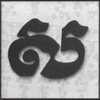 |
Advisory Board Member, HeritageWatch  |